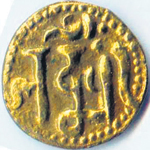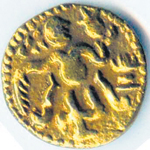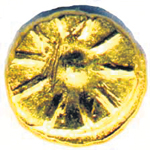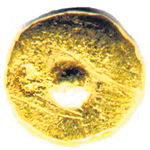|
|
||||||||
|
Conmen and coins All that glitters is not gold, warns Kavan Ratnatunga The prospect of owning treasure has led many Lankans to invest fortunes on fake gold coins. Recent articles in the Sinhala media, report on a gang now in custody who are said to have swindled millions from gullible members of the public.
The racket is widespread. In early July this year, a member of the Sri Lanka Numismatic Society, visited me with a co-worker who said he had a friend who claimed to know a farmer who had found a Nidana (treasure). They showed me three small coins they said had been determined to be 24 kt gold. The farmer had claimed to have found 3.1 kilos of gold coins in a clay pot, two feet underground, and was interested in finding a buyer. The sample coins were not of a recognized type. One had a Sun symbol with 10 radial rays on one side and a single central dot on the reverse. It was 9 mm in diameter and 2 mm thick. About the size of a copper coin known as Varagan, weighing 1.9 grams, it had the density of gold.
I was, however, suspicious, for all known medieval gold kahavanu are never pure gold (24 kt) and are less than about 18 kt. I agreed to investigate to ensure that if this claim was genuine, the treasure would not be melted for gold. On requesting that a larger sample of about 100 coins be made available for detailed study, I was first told that such a sample would be brought to Colombo, but then the contact was asked to bring cash and collect them from a location in the Anuradhapura district. When he drove there he was told the hoard had been sold to someone else. The sellers had clearly not wanted the items checked by anyone knowledgeable.
I had kept one of the sample gold coins and showed it to some knowledgeable coin dealers in Fort. They were well aware of this gold coin scam which has been going on for over a decade. Many like this one are just fantasy designs made by forgers with no numismatic knowledge. Some, however, are replicas of known gold kahavanu or fractions. An example gifted to me by a dealer, a gold plated silver replica of a medieval Lankan Pala ( Quarter Kahavanu ) type III with Jasmine flower and Chank was 13 mm in diameter, 1.2 mm thick and 1.2 grams in weight. One needs to be an expert to identify this as a modern fake. One is reminded of a comment in 1907 by John Still in his papers in the Journal of the Royal Asiatic Society Ceylon Branch, Vol 19 #58. On page 164 he puts a footnote to the word "genuine". I quote "How rare genuine specimens are I am inclined to think very few people thoroughly recognize. Gold "Lankesvaras" and "Vijaya Bahus' are turned out wholesale in Kandy now, and are so skilfully done that most of them are duly absorbed into collections. The improved manufacture of late is marked." The dealers described to me the sequence of events, exactly as it was more recently published in articles.
First a few sample coins made of gold are sent through brokers, to establish an interest. The hoard is offered at gold price or below, with a claim of much higher antiquity value. The seller requires the buyer to visit a remote place to obtain the hoard. A parcel is shown which appears to have gold coins like the sample coins. Some who have got caught to this trick have later found out the coins in the hoard unlike the samples were either gold plated copper or silver coins. Sometimes even small pieces of scrap iron were at the bottom of the parcel for weight. In one case, the buyer was almost kidnapped and held to ransom, when he was taken on foot into a forest. In another case the buyer had given the seller, bundles of paper in which only the top and bottom Rs. 1000 notes were currency. Each trying to con the other, didn't check what they were given. The seller having found that he had not got the cash he expected, phoned the Police and had the buyer arrested for possession of an archaeological hoard. The Archaeological Department determined that the items were fake coins and not antiques and those arrested were released. (The writer maintains an educational website
on 2300 years of Lankan coins at http://lakdiva.org/coins/
and is Vice President of the Sri Lanka Numismatic Society)
| ||||||||
Copyright © 2006 Wijeya Newspapers
Ltd. All rights reserved. |



